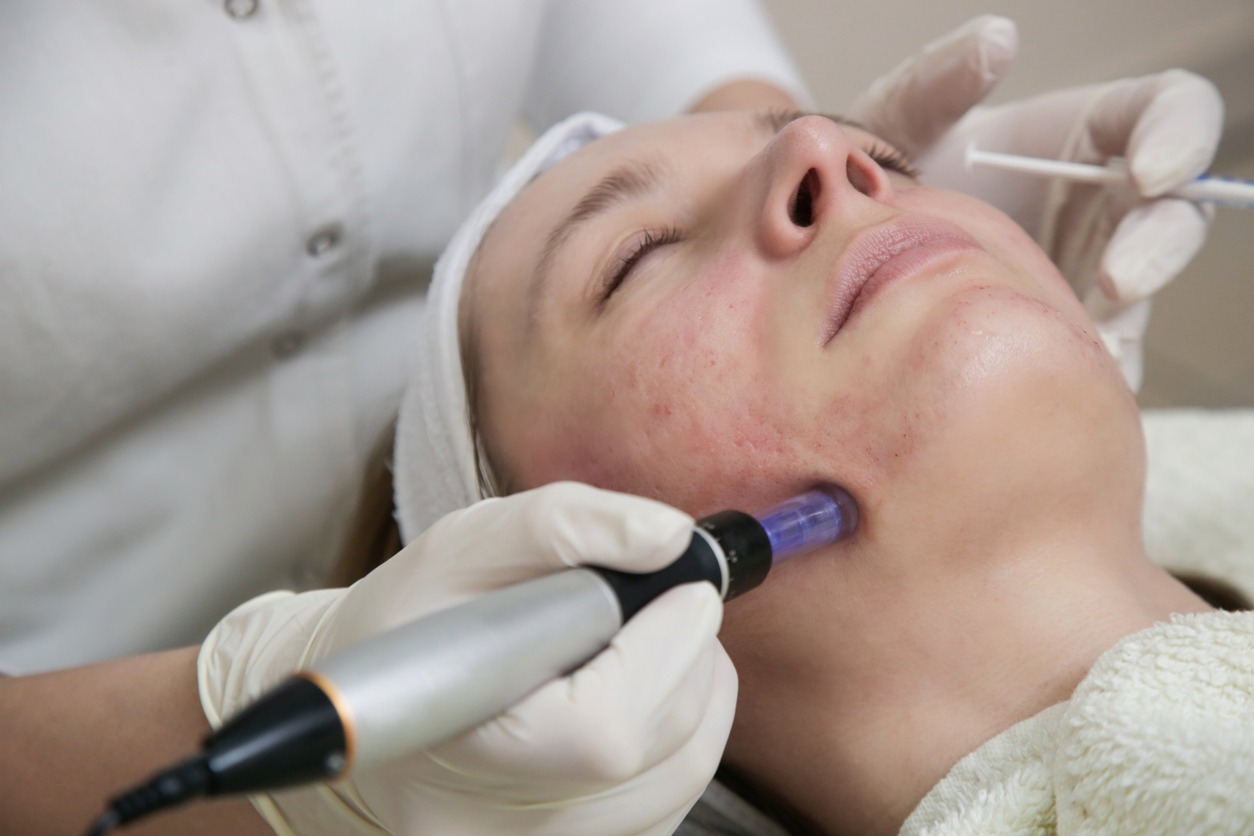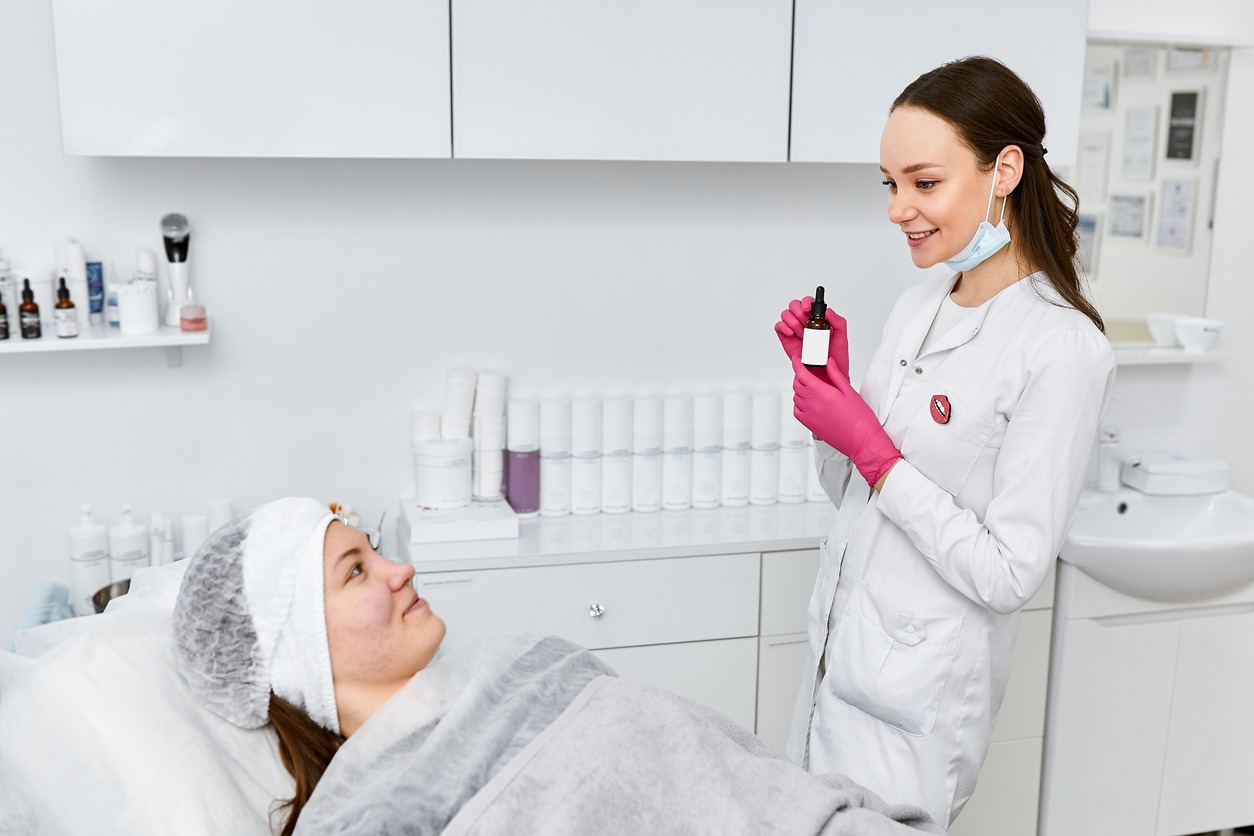Microneedling is a minimally invasive cosmetic procedure that stimulates collagen production to treat skin problems. This procedure, also known as collagen induction therapy, makes tiny punctures in the skin with tiny, sterile needles.
The American Academy of Dermatology Association (AAD) claims that the skin’s recovery from microneedling can help lessen the visibility of scars and dark patches while also enhancing skin suppleness.
A 2021 review also indicated that microneedling may encourage hair development in alopecia sufferers, though further research is required to confirm this.
If you have certain skin issues that haven’t improved with home remedies or other dermatological procedures like chemical peels, you might be a perfect candidate for this surgery.
Procedure for Microneedling
In order to do the treatment, a doctor uses a pen-like equipment with tiny, sterile needles to make tiny punctures under the skin. After the treatment, you probably won’t even notice the tiny pinpricks that occurred.
In order for the skin that has just been rejuvenated to be even, the doctor usually glides the tool equally across your skin.
The medical professional will apply a topical anesthetic to the treatment area 45 minutes to 1 hour before the operation. The microneedling procedure, which lasts about 30 minutes, will be made more comfortable by numbing the skin beforehand.
After that, your visit may be concluded by the doctor applying a soothing or growth serum. The typical microneedling procedure takes two hours to complete.
What to Expect after Microneedling
Microneedling doesn’t hurt as much as plastic surgery and doesn’t take as long to heal. Most people don’t need much time off, if any at all.
In the first few days after the procedure, your skin might be irritated and red. This is a normal reaction to the tiny “wounds” that the needles make on your skin.
If you feel good, you can go back to work or school after the surgery. Let your skin heal up first before putting on makeup. But after the right amount of time has passed, camouflage makeup can help hide the redness as it goes away.
Your skin will also be more sensitive to the sun, so make sure to use sunscreen. Still, it’s best to wait one week before letting the sun and harsh chemicals touch your skin.
After microneedling, your skin starts to make new tissue pretty quickly. In theory, you should start to see results in a few weeks.
Multiple sessions and possibly other complementary treatments will be required to maintain the results of your treatment. The doctor will collaborate with you to create a plan of action based on your specific goals.
Aftercare Tips
After microneedling, your doctor should give you clear instructions on what to do. Follow the directions carefully because they may be based on your health history or skin type.
1. Sun protection
In general, you should always wear sunscreen for the first two weeks after microneedling. When you go outside in the days after your treatment, make sure to put on sunscreen.
After your microneedling procedure, don’t stay out in the sun for long periods of time for the first week. Your skin will be more sensitive to sun damage than usual.
2. Avoid infection
Use any antibiotic cream your doctor gives you to keep from getting sick.
Before you touch your face, wash your hands.
In the 24 hours after microneedling, don’t put on makeup, especially with a brush that has been used before.
To protect your skin, you should also stay away from swimming pools, saunas, and places where you might sweat a lot, like when you work out hard at the gym.
If you wait 72 hours, you might be able to do these things again.
3. Skin care products to use or avoid
After your microneedling procedure, there are a few things you should be aware of for the first few days.
Don’t use scrubs, retinols, or vitamin C.
Avoid any skin care product that has harsh chemicals that are meant to remove dead skin. Avoid anything that smells, and don’t use glycolic acid or alpha hydroxy acids (AHAs).
After microneedling, you should stay away from retinol and vitamin C serum for at least the first 48 hours.
If you use strong anti-aging products, you might want to ease back into your usual beauty routine after 2 full days.
4. Cleanser and moisturizer options
Run any cleansers, toners, or scrubs you plan to use in the 2–3 days after microneedling by your dermatologist to make sure the ingredients won’t make side effects worse.
Hyaluronic acid can be used after microneedling, and in some cases it’s even suggested to help stimulate collagen production after your procedure.
If your skin feels dry, you can usually use coconut oil as an emollient to lock in moisture and hydrate your face after microneedling.
Witch hazel that has been diluted and does not contain alcohol can also be used to clean dry skin.
It’s best to stick to gentle, natural ingredients that you’re already familiar with.
How Does Microneedling Work?
Microneedling works by stimulating the skin’s collagen production. The pinpricks used in the procedure cause minor skin damage, and the skin responds by producing new collagen-rich tissue.
This new skin tissue has a more even tone and texture. Collagen loss is common with age or skin injury. Extra collagen may help firm the skin by stimulating the skin’s production of new tissue.
Microneedling is also effective when combined with topical serums, radiofrequency, and platelet-rich plasma. A dermatologist can help you decide on additional treatment options and their estimated costs.
Benefits of Microneedling
Microneedling is becoming more popular because it has more and more benefits. It is said to refresh and plump up the skin with little pain and downtime, and it can be changed to fit the needs of each person.
Some of the benefits of microneedling are:
- lessening the look of scars, such as acne scars
- decreasing the visibility of wrinkles and fine lines
- making pores less big
- reducing the look of hyperpigmentation, or dark spots
- evening out skin tone
- making skin more elastic
- minimizing the appearance of stretch marks
- minimizing the appearance of scars
- encouraging hair growth in people with alopecia.
Microneedling is less expensive than laser therapy and, in some cases, may be more effective.
Because of the safety concerns associated with certain types of laser treatments on skin of color, people with darker skin tones may prefer microneedling to laser therapy. There is still a lack of research on the effectiveness and safety of using laser treatment on darker skin tones.
Conclusion
Taking care of your skin after microneedling can significantly improve the outcome of your treatment. Not only will proper aftercare relieve your symptoms, but it will also protect your skin as it heals.
Aside from micro needling, derma rolling is another method that you can try on your skin. To learn more about this, you can check out our Complete Derma Rolling Guide.


